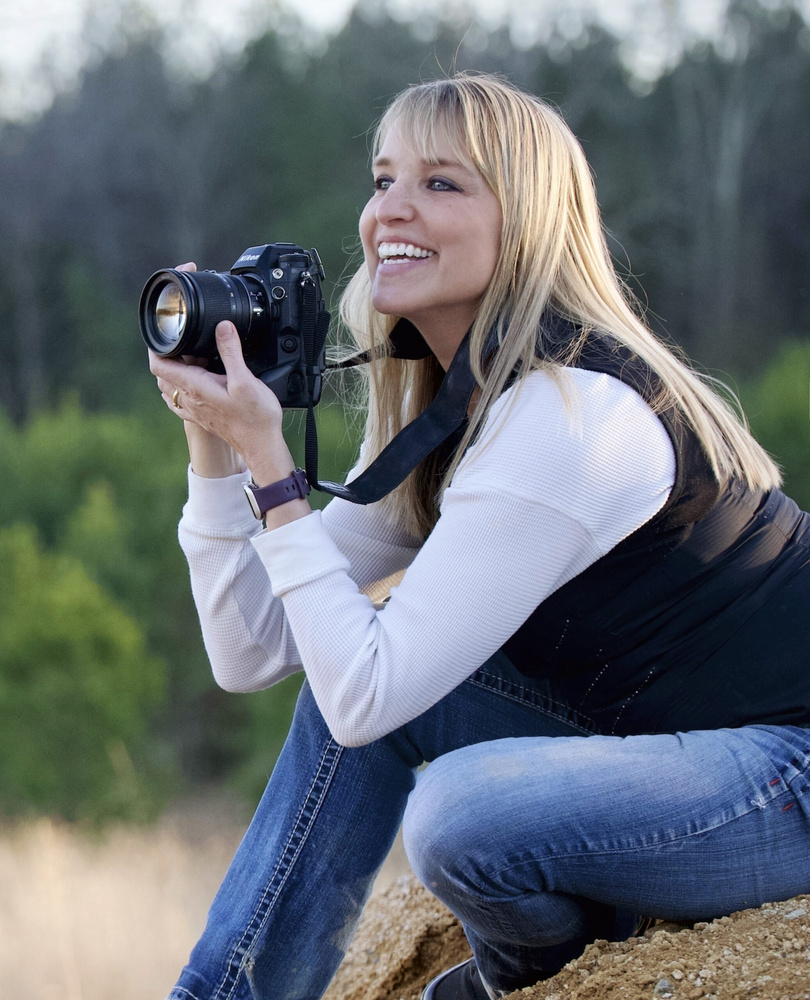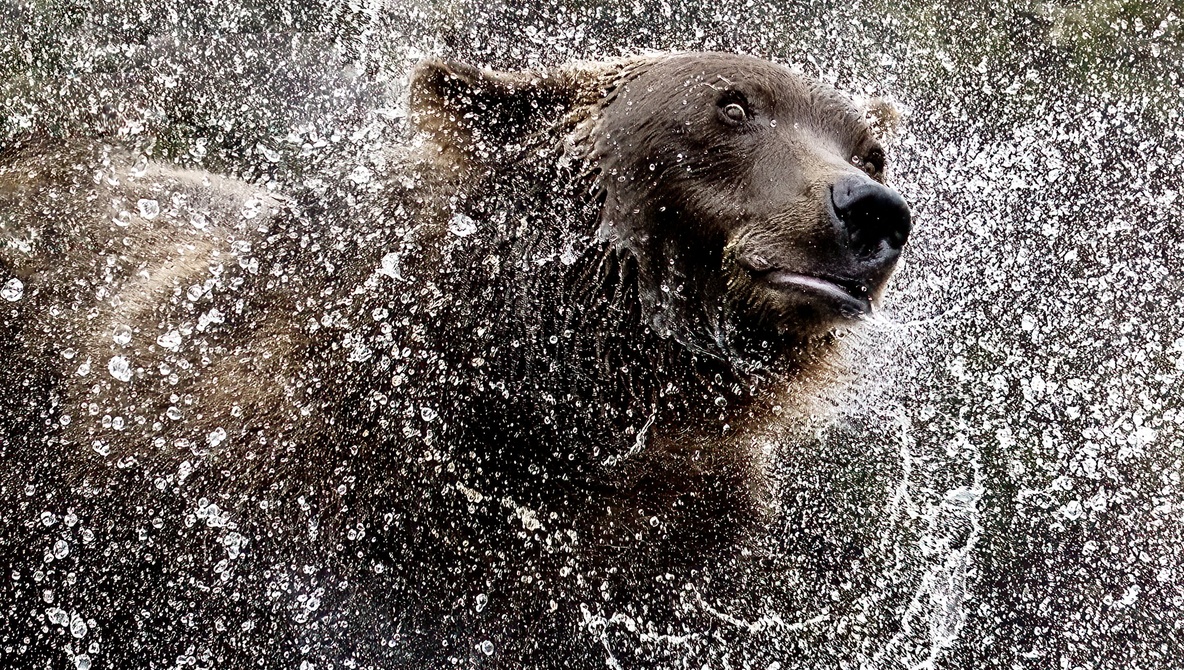Tamara Lackey, Nikon USA Ambassador, book author, PBS show host, and philanthropist, has used photography to establish Beautiful Together refuges for children and animals in need in Ethiopia and North Carolina. Here she weighs in on finding your voice, overcoming creative block, and camera bag essentials (don’t forget the candy).
What must-carry items are always in your bag?
My Nikon Z8 is my favorite camera right now, and it’s always in my bag! Depending on what I’m photographing, I also carry the NIKKOR Z 85mm f/1.2 S, the NIKKOR Z 24-70mm f/4 S, and the NIKKOR Z 70-200mm f/2.8 VR S for portrait shoots.
For wildlife photography, along with the Nikon Z8, I will bring the NIKKOR Z 600mm f/6.3 VR S, the NIKKOR Z 100-400mm f/4.5-6.3 VR S, the NIKKOR Z 70-200mm f/2.8 VR S, and the 1.4x or 2x teleconverter.
For pet photography, I use the Nikon Z6III and a reflector or my Nikon SB-5000 flash as needed. I also always pack 1 TB Atlas Ultra memory cards, multiple backup batteries, individual sensor cleaner wands for long shoots in dusty locations, extra lens caps, Aquaphor, a sunscreen stick, and several packs of Smarties candies for myself.
What technique do you use most often?
I love to hold the camera far away from my face while working to capture an expression, moment, or unusual angle. I’ve photographed this way for over 20 years—even back when vari-angle LCDs weren’t a thing yet, I simply trusted I was getting the shot. I love how this technique removes the block of the camera between me and my subject while giving me freedom to move. In my experience, this more consistent sense of connection often leads to portraits that feel more engaging.
How do you know when a photo is a success?
A photo is a success when it makes people care and when it moves them to act. Early on, I photographed children in care centers and orphanages, using those images to tell stories that could make a difference. That eventually grew into Beautiful Together, the nonprofit we founded in 2014.
In 2020, we expanded locally, building an 83-acre animal sanctuary in Chapel Hill, North Carolina, to connect children in at-risk situations and under-resourced communities with rescue animals. Since then, we’ve saved around 3,500 animals from overcrowded shelters and inhumane situations while maintaining our work in Ethiopia. Through it all, I’ve continued to photograph relentlessly—because photographs are what carry these stories forward.
What is your best photo skill?
I think my best photo skill is being able to capture professional-quality images in almost any situation—and to do it extremely quickly. Some of it comes from years of shooting weddings and sports. Mastering manual mode early on definitely helped because adjusting settings on the fly became muscle memory.
How do you find inspiration for an image?
This answer has changed over time for sure. Today, I find that I am fascinated by the parallels I see when photographing wildlife and at-risk animals. Their expressions, body language, and movement often feel so very much the same—unguarded, unpracticed, and completely authentic. I will press the shutter while photographing a wild tiger in India and find it amazing that I took almost the exact same shot one week prior when photographing a rescue dog in Chapel Hill, North Carolina.
After a camera, what are the next three things you’d invest in?
First, a great lens. One excellent lens will outlast multiple average ones—and it will elevate your images right away, a confidence booster that can be important to someone just starting out.
Second, lighting. Knowing which additive light to use in which circumstance, based on what you’re shooting, makes a big difference, and the right option is worth the investment.
And third, great memory cards. In my experience, most photographers underestimate the impact they can have on your captures.
Photographers are always told to develop a style or find a voice, but there is little advice on how to find that voice. What guidance can you offer?
This is an excellent question. One exercise I use in workshops includes a bit of self-reflection: choose your favorite images, the ones you have shot that you truly love. Then describe yourself (at least how you see you) via a series of leading questions I’ll ask.
Next, repeat the exercise from the perspective of what others have said about you. Consider moments in books or films that have stayed with you and why. There are many more questions, but basically: What are you drawn to? What do you do so naturally and effortlessly that you don’t even realize how good you are at it? What do your favorite images say about you, beyond the subject itself?
If you weren’t worried about social media or paying the bills or wanting your photography to fit into a neat descriptor, what would you shoot?
If you’re doing this process thoughtfully, it’s probably an hour-long exercise—but what you can end up with is a pretty strong identification of what your style or voice is, or at least what it could be.
I once had a participant in one of my workshops who owned a polished, highly posed children’s portrait studio in downtown London. This exercise validated something that had been in the back of her mind for a while: what she truly wanted was to photograph motorcycles in sleek settings—pretty much the complete opposite of her career at the time. But she went all in, changed everything, and now that’s exactly what she does.
Have you ever had a creative block? How did you overcome it?
Yes—several times. The first was just three years into my career. I felt I had to accept every job that came my way, and I burned out quickly. I was so overscheduled that whenever any calls or messages came in, I was hoping they were cancellations. It’s pretty hard to feel creative when you don’t even want to be at the shoot.
So I stepped back and reevaluated how I was running my business. I then raised my pricing, limited my offerings, and reduced the number of sessions I’d book in a week. That simple shift gave me some breathing room, raised my value as a photographer—and completely reignited my excitement for photography.
The second time, I just started feeling like I was stuck in a rut. Everything with my studio was fine, but I felt a strong drive to do something more meaningful with my photography. In my experience, when my enthusiasm wanes, my creativity often dims with it. So I started doing pro bono shoots for organizations I admired. That eventually led me to launch Beautiful Together—and what began as a way to use photography for good has now grown into something far bigger than I ever imagined.
Since then, I haven’t experienced creative blocks. A lot of exhaustion, sure—but no lack of creative flow.
Do you seek feedback? If so, in what form? What feedback is the most valuable? Is there feedback one should ignore? If so, what feedback would that be?
Since there’s all kinds of feedback out there, I’ll focus on negative feedback because I have seen so many strong creatives walk away from this field after being crushed by harsh words about them, their work—or even their appearance.
I once asked a dear friend of mine how he felt about the ugly feedback he would sometimes hear. He would often retweet some of the angry, insulting comments and reply with: “Sounds like you need a hug.”
Did that negative feedback ever get to him? If he didn’t know them, it meant nothing. If it came from someone whose opinion he valued or it was constructive enough to make him better, he was all ears. The rest was just noise that wasn’t going to distract him from doing the work he loved.
How has your work changed over time?
It has changed tremendously—and also not at all. I started out photographing children, families, and weddings. And although I still shoot portraits, most of my work today focuses on wildlife and at-risk animals. What’s remained constant is that I’ve always been drawn to subjects who can’t fake it—or haven’t learned how to yet.
What does success mean to you? Are artistic success and financial success related or independent of one another?
As a professional photographer who once employed seven associate photographers in a large and busy commercial studio, along with a studio manager, assistants, and a fully booked calendar, I would have defined that as success. Financially, I felt good about that version of success, too.
But over time, I’ve realized that, for me, true artistic success comes when the work feels deeply meaningful. That has taken on an entirely new shape through my work with Beautiful Together—specifically our local and international youth programs and animal sanctuary.
So can financial success and artistic success be the same? One considered the currency of the world—and the other the currency of the soul? I do believe you can achieve both at the same time. I truly do. But rarely have I seen that happen immediately.

Tamara Lackey is a renowned professional photographer, Nikon USA Ambassador, author, and show host. She speaks at a wide range of programs and conventions on the power of photography, including presenting at Nikon’s Global Launch Event in Tokyo to introduce its groundbreaking mirrorless camera system.
Tamara has co-produced and hosted multiple live broadcasts and hosted both The reDefine Show (AdoramaTV) and Chasing Frames with Tamara Lackey (PBS). She leads photography adventure workshops around the world and is the author of nine photography books. In addition to being a Nikon Ambassador, Tamara is an ON1 Guru, an OWC Creator and is part of the Think Tank Pro Team.
Tamara is also the Executive Director of Beautiful Together, a nonprofit she co-founded in 2014. What began with a camera and a commitment to improving the lives of orphaned children in Ethiopia has grown into a mission that connects animals in need of refuge with children living in at-risk situations and under-resourced communities. Today, Beautiful Together operates an 83-acre animal sanctuary in Chapel Hill, North Carolina, while continuing its program work with a partner orphanage in Ethiopia.

